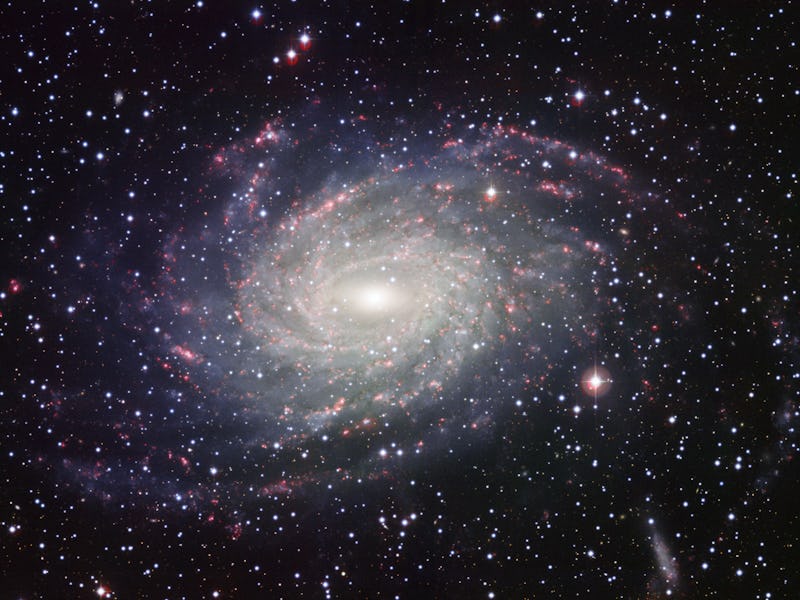Mathematicians have announced the most accurate estimate of the mass of the Milky Way galaxy yet, and the results are in: our galaxy holds matter equivalent to about 481 billion suns.
The new measurement, set to be published in The Astrophysical Journal, uses observations of how stars move across the galaxy to calculate the gravitational forces between objects. They paid special attention to globular clusters — groupings of stars bound together by intense gravity that orbit like a satellite around the center of a galaxy.
Observes the New York Times:
Just as the mass of the sun can be calculated by measuring its gravitational pull on Earth, the mass of the Milky Way can be calculated by measuring its gravitational pull on the globular clusters.
Of course, the total mass arrived at by the researchers remains a best-guess, though they are confident they’re within the ballpark, give or take about 100 billion suns.
A “solar mass” is a common unit of measurement in astronomy because it is both very big and within the realm of human imagination. But you could describe the estimated mass of the galaxy in terms of any object of known mass.
For your reference, the Milky Way is approximately equal in mass to:
1.6 x 10^17 Earths
That’s 16 followed by 16 zeros, or 160 quadrillion, Earths.
1.6 x 10^32 Great Pyramids of Giza
That’s 16 followed by 31 zeros, or 160 nonillion, Great Pyramids of Giza.
1.2 x 10^38 T. rexes
That’s 12 followed by 37 zeros, or 120 undecillion, Tyrannosaurus rexes.
4.5 x 10^38 Tesla Model S cars
That’s 45 followed by 37 zeros, or 450 undecillion, Teslas.
8.9 x 10^39 Donald Trumps
If you take him at his word, that’s 89 followed by 38 zeros, or 8.9 duodecillion Donald Trumps.
7.0 x 10^41 MacBook Airs
That’s seven followed by 41 zeros, or 700 duodecillion, MacBook Airs.
